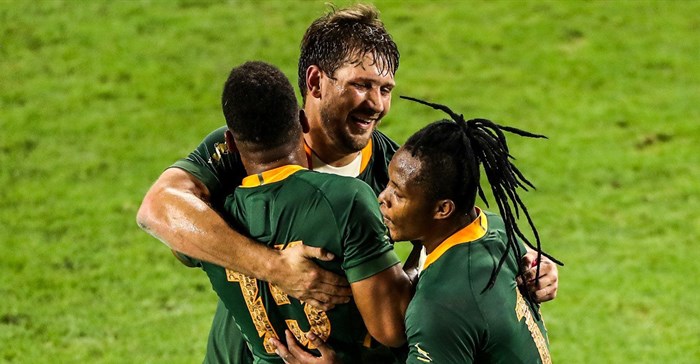
Top stories




EducationHow gender-inclusion in higher education can transform Africa’s future
Meekness Lunga-Ayidu 18 hours

LegalNigeria to implement new tax laws from January 1 despite calls for delay, Tinubu says
Camillus Eboh 2 days

I am all about the data and the numbers. I like to dig deeper and find the insights behind the numbers, the #StoryBehindTheStory.
As the tournament has grown and matured and as rugby, as a sport, has grown more popular with the inclusion of many non-traditional rugby playing nations in the tournament, match-day attendance at the Rugby World Cup has shown steady and consistent growth throughout the history of the tournament.
Total attendance at the first Rugby World Cup back in 1987 was 604,500 over a total of 32 matches with an average attendance of 20,156 people per game. In 1995 in South Africa, 1,100,000 people attended 32 games with average attendance growing by 70.5% to 34,375.
In the last tournament, played in the UK and Wales in 2015, a total of 2,477,805 people attended the 48 matches played – with an average attendance of 51,621. This is a growth of 156% over the inaugural tournament.
Interestingly, in Australasia in 1987, stadiums were only 60% filled compared to the UK and Wales where stadiums were 95% full. But what about TV audiences where the vast majority of fans across the world will access the tournament?
Well, in South Africa (and here I have my friends at DSTV and SuperSport to thank for the numbers), the opening match in Japan between the hosts and Russia was viewed live on linear TV by 240,729 adult South Africans.
This is actually remarkable considering that a) the game was between two non-traditional rugby-playing nations, and b) the game was on a weekday at lunchtime. The first ‘big’ game of the tournament was between two of the most successful Rugby World Cup nations – South Africa and New Zealand. This attracted 673,509 live/linear viewers.
I specify linear because DSTV, the exclusive broadcasters in South Africa, also has a number of alternative digital platforms on which the game could also be viewed. When you include these additional platforms like DSTV Now, the total audience for the SA v NZ game swelled by an additional 51.2% to a total audience of 1,018,153 South Africans.
The audience could have been even bigger if it hadn’t been for a technical error that prevented many viewers logging into the DSTV Now feed.
As @DStv subscribers try to watch #RSAvITA on @SuperSportTV on Friday, customers complain that the DStv Now service is once again broken. @MultiChoiceSA appears unable to fix the live concurrent stream capacity problems that happens during SA 2019 Rugby World Cup matches.
— TVwithThinus (@TVwithThinus) October 4, 2019
The industry is constantly talking about how digital media is going to transform the way people consume traditional media. I beg to differ. For me, based on these numbers, it is clear that this transformation has already happened!
But how does the audience of this game compare to previous Rugby World Cup matches? Let’s look at South Africa’s opening pool game in the 2015 RWC, the Brighton Miracle, where the Boks famously (or is it infamously?) lost to Japan.
That game pulled in 1,115,625 South African viewers (according to DSTV-I) compared to the 1,018,153 viewers of South Africa’s opening game against New Zealand in 2019. Whilst this is a slight decline of only 9% the interesting thing for me is the change in how people watched the game.
Back in 2015, the majority of the 1.1 million viewers would have watched through traditional linear TV. Fast forward four years and we see how less than 50% of viewers are now watching traditional linear broadcasts.
And, lastly, to show just how universally appealing a major world tournament like the RWC is, let’s also compare South Africa v New Zealand at the World Cup 2019 to South Africa v New Zealand in the Rugby Championship 2019 played just two months ago.
If we look just at the linear audience for both games, the RWC game attracted 50% more viewers than the Rugby Championship game. This suggests that the RWC carries a greater appeal amongst casual South African fans, whereas the Rugby Championship is the place for the more serious fan.
Now you know the story behind the story of the Rugby World Cup. Let’s all hold thumbs that the Boks continue along their winning ways and that we see them in the final and eventual winders of the 2019 Rugby World Cup in Japan!
